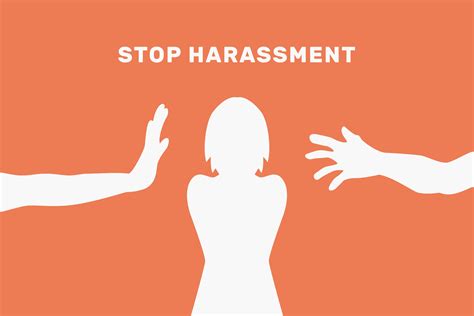
- Hostile Workplace Harassment: An Unwelcome Reality
- Legal Protections Against Hostile Workplace Harassment
- Recognizing Hostile Workplace Harassment
- Employer Responsibilities
- Individual Rights
- Hostile Workplace Harassment: A Bane on Workers’ Well-being
- Creating a Harassment-Free Workplace
- Addressing Harassment: A Prompt and Impartial Approach
- Identifying the Warning Signs
- Preventing Harassment: A Multi-Faceted Approach
- Benefits of a Harassment-Free Workplace
- Conclusion

Hostile Workplace Harassment: An Unwelcome Reality
Workplace harassment is a persistent problem that can create an atmosphere of fear, intimidation, and hostility. When such behavior is based on protected characteristics, such as race, gender, or religion, it becomes illegal and known as hostile workplace harassment. Understanding the legal protections available to individuals facing this type of harassment is crucial to creating a fair and equitable workplace for all.
Legal Protections Against Hostile Workplace Harassment
Laws and regulations exist to protect individuals from hostile workplace harassment, such as the Equal Employment Opportunity Commission (EEOC) and state anti-discrimination laws. These laws prohibit employers from creating or tolerating a work environment that is hostile or abusive based on protected characteristics. They also require employers to take reasonable steps to prevent and address harassment, including providing training to employees and investigating complaints promptly.
Recognizing Hostile Workplace Harassment
Identifying hostile workplace harassment can be challenging, as it often involves subtle and indirect behaviors. However, certain actions or patterns of behavior may indicate a hostile work environment, including:
* Unwelcome jokes, comments, or gestures based on protected characteristics
* Repeated exclusion or isolation of an individual based on their identity
* Physical or verbal threats or intimidation
* Demeaning or disrespectful treatment that undermines an individual’s job performance or career opportunities
Employer Responsibilities
Employers have a legal obligation to prevent and address hostile workplace harassment. This includes:
* Establishing clear policies against harassment and communicating them effectively to employees
* Providing training to employees on what constitutes harassment and how to report it
* Conducting thorough investigations into complaints of harassment
* Taking appropriate disciplinary action against individuals found to have engaged in harassment
* Creating a supportive work environment where individuals feel comfortable reporting harassment without fear of retaliation
Individual Rights
Individuals facing hostile workplace harassment have the right to:
* Report the harassment to their supervisor, HR department, or a higher authority
* File a formal complaint with the EEOC or a state anti-discrimination agency
* Seek legal action if the employer fails to take appropriate steps to address the harassment
* Receive damages for emotional distress, lost wages, and other losses caused by the harassment
Hostile Workplace Harassment: A Bane on Workers’ Well-being
It’s a grim reality that employees may face hostile workplace harassment, a toxic environment where they feel belittled, intimidated, or otherwise mistreated. This scourge can have far-reaching consequences, affecting both individuals and organizations as a whole. Understanding and addressing hostile workplace harassment is paramount to fostering a respectful and productive work environment.
Creating a Harassment-Free Workplace
Organizations bear the responsibility of creating and maintaining a workplace free from harassment. This entails implementing clear policies that define unacceptable behaviors and outlining procedures for reporting and investigating complaints. Providing training to employees is also essential, as it helps raise awareness about what constitutes harassment and equips individuals with the skills to prevent and respond to it.
Addressing Harassment: A Prompt and Impartial Approach
When harassment occurs, it’s crucial to address it promptly and impartially. Organizations should establish clear mechanisms for employees to report complaints, ensuring confidentiality and protection from retaliation. Investigations should be thorough and fair, leaving no stone unturned in determining the facts and identifying any potential biases.
Identifying the Warning Signs
Recognizing the warning signs of hostile workplace harassment is key to nipping it in the bud. Pay attention to subtle changes in workplace dynamics, such as increased social isolation, avoidance of certain individuals, or a sudden drop in productivity. These signs may indicate that something is amiss, warranting further investigation.
Preventing Harassment: A Multi-Faceted Approach
Preventing hostile workplace harassment requires a multi-faceted approach. Organizations should foster a culture of respect and inclusivity, where diversity is valued and all employees feel safe and respected. Encouraging open communication and providing avenues for employees to voice concerns can help identify and address potential issues early on.
Benefits of a Harassment-Free Workplace
Creating a harassment-free workplace benefits everyone involved. Employees feel more valued and motivated, leading to increased job satisfaction and productivity. Organizations enjoy a positive reputation, attracting and retaining top talent. A harassment-free workplace is simply a better place to work, fostering a sense of belonging and well-being among all employees.
Conclusion
Hostile workplace harassment is a serious issue that organizations must address head-on. By implementing clear policies, providing training, and responding promptly to complaints, organizations can create a harassment-free environment where all employees feel respected and valued. This not only benefits individual employees but also fosters a positive and productive workplace culture that benefits everyone.

